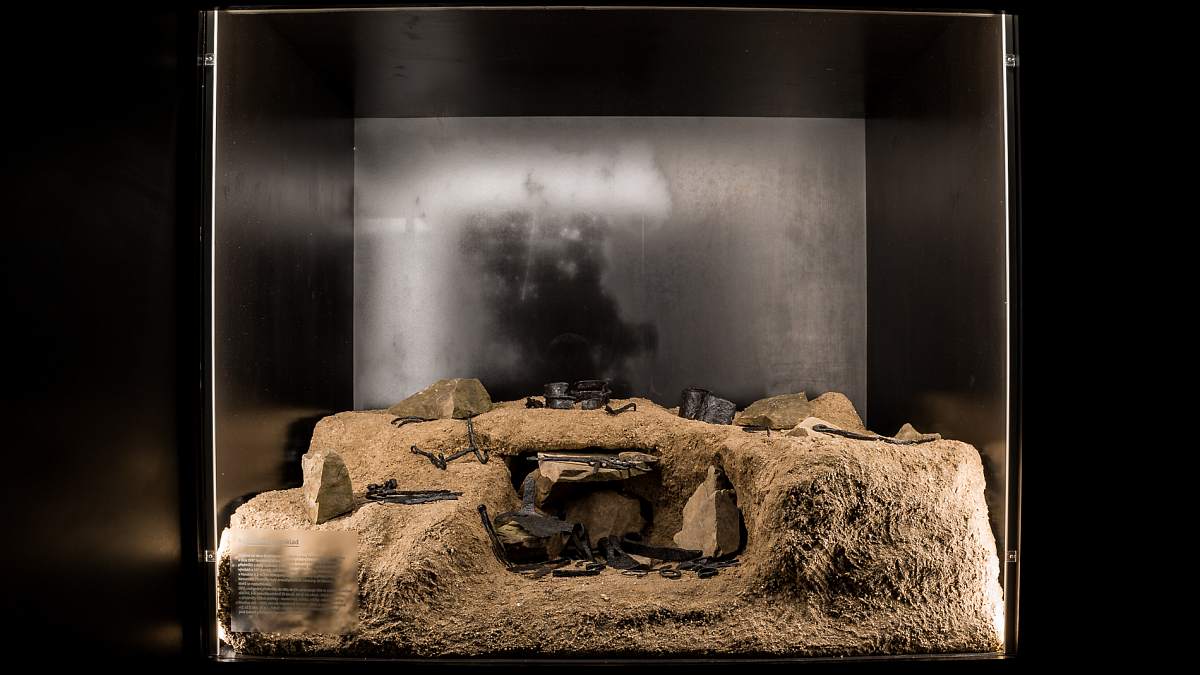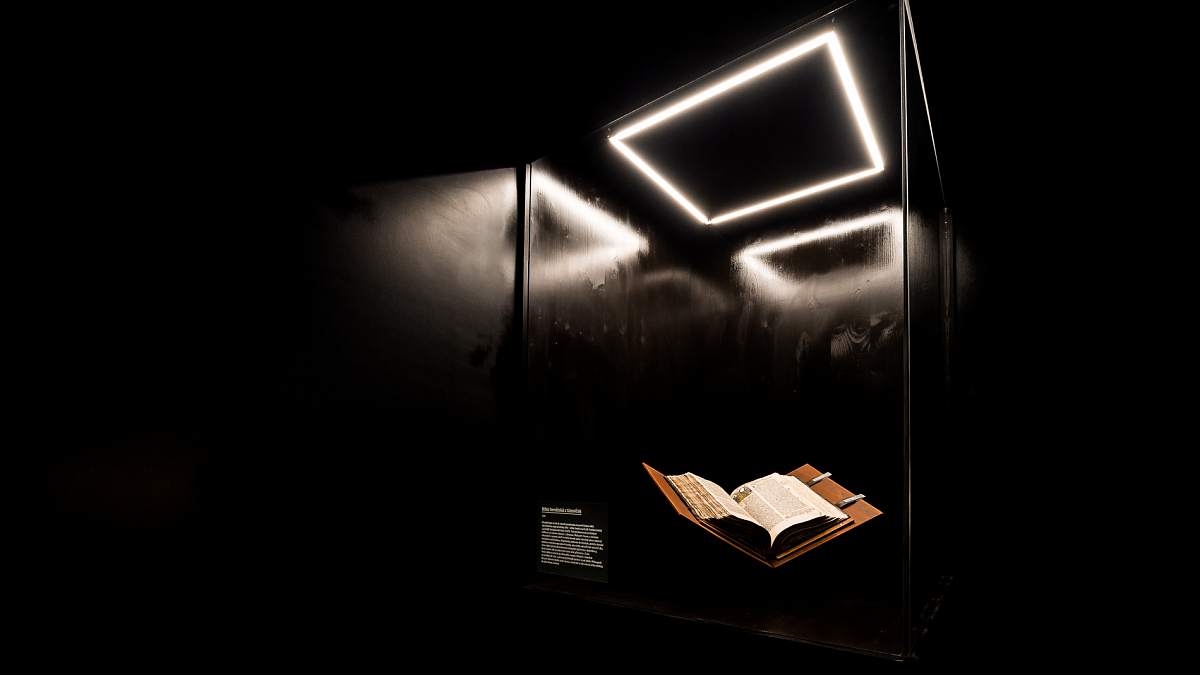TREASURES OF THE BLATNÁ REGION
Venetian Bible from Uzenice
The Venetian Bible (Venice, 1506) was based on the incunabula of the Czech Bible, which is also referred to as the Prague Bible (1488), and of the later Kutná Hora Bible (1489). Until the 18th century, it was regarded as the first Czech Bible. The printing was funded by Prague burghers Jan Hlavsa of Liboslav, Václav Sova of Liboslav and Burian Lazar, who could afford to award the demanding project to the printing works of Hermann Liechtenstein. At that time, the printing business was managed by his nephew Peter. Despite being a Catholic, he accepted this order from the Hussite patricians and even printed the whole Bible by using the accented Bastarda type (letters with accents), which had been brought from Bohemia especially for this purpose. The project was awarded to Venice mainly because the domestic printers were not of sufficient quality to handle such a demanding project. The same letter type was used in Venice to print another two Czech-language works: Kniežky tyto slovú Zrcadlo (These Books Are Called a Mirror) (Venice, 1506) and O boji duchovnieho Jeruzaléma s Babylonskými (On the Fight of the Spiritual Jerusalem with the Babylonians) (Venice, 1506). Compared to the Bible, these were small prints of only 38 sheets.
This copy was awarded to the District Museum in Blatná from Uzenice at the beginning of the 20th century and it was taken over by the then curator Josef Siblík. Surprisingly, the copy had been donated by peasant Josef Janota, but we do not know how such a rare book had come into his possession.
The Bezdědovice Treasure
In 1997, on a hill in the Dubina forest north of the village of Bezdědovice, Karel Říha made a significant discovery – referred to as a ‘depot’ or ‘treasure’ – of iron objects from the La Tène period. In total, the treasure contained 48 completed blacksmith products and 137 fragments, which together weighed 7.15 kg. The artefacts were surrounded by granite boulders at a depth of 0.2-0.3 m and covered with a large stone. The objects were probably wrapped in a fabric which had not been preserved.
The probable reason for keeping these objects in this hiding place becomes clear when one considers the Celtic settlement situated 500 m away, where the blacksmith who had hidden all these items probably used to live. Although they were things of everyday use – wheel fittings, bits, scissors, axes, trowels, hammers, etc. – he viewed them as pieces of his property. He hid them probably in 2nd or 1st century BC, because at that time the Celtic civilization was already on the decline under the pressure of incoming Germans and Romans.


